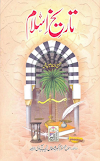THE DARK INTERNET
ڈارک انٹرنیٹ کیا ہے؟
Terminology
The dark internet has often been confused with the deep web, which refer to the parts of the web not indexed (searchable) by search engines. This confusion dates back to at least 2009. Since then, especially in reporting on Silk Road, the two terms have often been conflated, despite recommendations that they should be distinguished.
Definition
 Darknet websites are accessible only through networks such as Tor(Click the link to download Tor Browser) ("The Onion Router") and I2P ("Invisible Internet Project"). Tor browser and Tor-accessible sites are widely used among the darknet users and can be identified by the domain ".onion". While Tor focuses on providing anonymous access to the Internet, I2P specializes on allowing anonymous hosting of websites. Identities and locations of darknet users stay anonymous and cannot be tracked due to the layered encryption system. The darknet encryption technology routes users' data through a large number of intermediate servers, which protects the users' identity and guarantees anonymity. The transmitted information can be decrypted only by a subsequent node in the scheme, which leads to the exit node. The complicated system makes it almost impossible to reproduce the node path and decrypt the information layer by layer. Due to the high level of encryption, websites are not able to track Geo location and IP of their users, and users are not able to get this information about the host. Thus, communication between darknet users is highly encrypted allowing users to talk, blog, and share files confidentially.
Darknet websites are accessible only through networks such as Tor(Click the link to download Tor Browser) ("The Onion Router") and I2P ("Invisible Internet Project"). Tor browser and Tor-accessible sites are widely used among the darknet users and can be identified by the domain ".onion". While Tor focuses on providing anonymous access to the Internet, I2P specializes on allowing anonymous hosting of websites. Identities and locations of darknet users stay anonymous and cannot be tracked due to the layered encryption system. The darknet encryption technology routes users' data through a large number of intermediate servers, which protects the users' identity and guarantees anonymity. The transmitted information can be decrypted only by a subsequent node in the scheme, which leads to the exit node. The complicated system makes it almost impossible to reproduce the node path and decrypt the information layer by layer. Due to the high level of encryption, websites are not able to track Geo location and IP of their users, and users are not able to get this information about the host. Thus, communication between darknet users is highly encrypted allowing users to talk, blog, and share files confidentially.The darknet is also used for illegal activity such as illegal trade, forums, and media exchange for pedophiles and terrorists. At the same time traditional websites have created alternative accessibility for the Tor browser in efforts to connect with their users. ProPublica, for example, launched a new version of its website available exclusively to Tor users.
In July 2017, Roger Dingledine, one of the three founders of the Tor Project, said that Facebook is the biggest hidden service. The Dark internet comprises only 3% of the traffic in the Tor network.
A more recent February 2016 study from researchers at King's College London gives the following breakdown of content by an alternative category set, highlighting the illicit use of .onion services.
Bitcoin services
Bitcoin services such as tumblers are often available on Tor, and some – such as Grams – offer darknet market integration. A research study undertaken by Jean-Loup Richet, a research fellow at ESSEC, and carried out with the United Nations Office on Drugs and Crime, highlighted new trends in the use of Bitcoin tumblers for money laundering purposes. A common approach was to use a digital currency exchanger service which converted Bitcoin into an online game currency (such as gold coins in World of Warcraft) that will later be converted back into money.
Illegal pornography
There is regular law enforcement action against sites distributing child pornography– often via compromising the site by distributing malware to the users. Sites use complex systems of guides, forums and community regulation. Other content includes sexualised torture and killing of animals and revenge porn.Terrorism
There are at least some real and fraudulent websites claiming to be used by ISIL (ISIS), including a fake one seized in Operation Onymous. In the wake of the November 2015 Paris attacks an actual such site was hacked by an Anonymous affiliated hacker group GhostSec and replaced with an advert for Prozac. The Rawti Shax Islamist group was found to be operating on the dark web at one time.








0 Comments